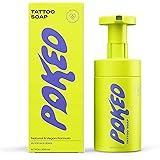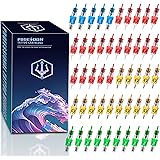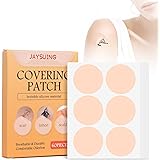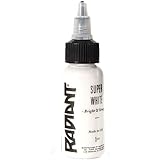Did you know that a significant percentage of aspiring artists, estimated to be over 60%, initially feel intimidated by the seemingly complex world of hand lettering? It is often perceived as an advanced skill requiring extensive artistic training, leading many to shy away before even attempting their first stylized letter. However, as demonstrated in the insightful video above, mastering custom typography does not necessarily mean starting from a blank canvas. Instead, powerful techniques can be employed to transform existing typefaces into bespoke works of art, providing a pathway for beginners to achieve stunning results with surprising ease. These methods are designed to demystify the process, allowing individuals to focus on adding unique flair rather than grappling with fundamental letter structure.
For those eager to dive into hand lettering without the initial hurdles, understanding how to leverage digital tools and existing type is invaluable. The core principle revolves around using a pre-established letterform as a guide, or ‘skeleton,’ upon which creative embellishments and modifications can be built. This approach significantly reduces the learning curve, making the journey into custom lettering enjoyable and highly rewarding. The techniques explored here provide a solid foundation, enabling a wide array of stylistic expressions to be developed, from playful and quirky to bold and dynamic. It is often found that this foundational understanding unlocks a deeper appreciation for typographical design.
Simplifying Hand Lettering with the “Build a Wall” Technique
One of the most accessible starting points for anyone looking to personalize their typography is a method that conceptually involves “building a wall” around a simple letterform. This technique is remarkably versatile and is easily adapted to various creative styles, offering a fantastic entry point for beginners. The process typically begins by selecting a word and typing it out in a basic, uncomplicated typeface, with uppercase letters often being recommended for their simpler forms and larger outlines, which are generally easier to trace. The beauty of this method lies in its ability to provide a consistent, legible base while inviting boundless creative additions, ensuring the final product always maintains its communicative function.
Once the base letters are established, the creative transformation begins by drawing around the existing structure in a stylized manner. This allows for the integration of unique artistic elements without the pressure of constructing the letter’s foundation from scratch, which is a common stumbling block for newcomers. Imagine if a simple, clean letter “S” could be enveloped by a deliberately shaky line, instantly imbuing it with a raw, punk-rock aesthetic. Similarly, an undulating line drawn around the outside, followed by strategically placed “drippy drips,” can transform an ordinary letter into something whimsical and fluid. These approaches free the artist to focus entirely on the stylistic additions, ensuring that the underlying letter structure remains intact and easily readable.
Furthermore, this fundamental technique can be expanded upon to create even more dynamic effects. Consider the possibility of employing only wiggly lines around the letter’s perimeter, which can evoke a cool, watery, or even trippy visual effect, reminiscent of waves or flowing currents. The key benefit of working in this manner is the reduced cognitive load; attention can be directed solely to applying style, rather than constantly worrying about the legibility of the letterform being created. This method essentially provides the ‘bones’ of the letter, allowing the artist to then add the ‘meat’ – the unique aesthetic qualities that make the hand lettering truly stand out. Diverse visual textures and moods can effortlessly be brought to life using this simple yet effective strategy.
Elevating Your Design: Modifying Digital Typefaces
To take the initial concept of using existing type as a base even further, significant character can be introduced by modifying the digital typeface itself before commencing any tracing or embellishment. This advanced step leverages the capabilities of digital art applications like Procreate or Fresco, where typed words can be converted into pixel layers, unlocking a realm of transformative possibilities. Once a text layer is converted, it is treated much like any other image, allowing for extensive manipulation through various tools. This process effectively blurs the lines between digital typesetting and freehand drawing, offering artists unparalleled control over their creative output.
The transformation tools available in most digital art software, such as “Skew” or “Distort,” become powerful allies in this stage of customization. By playing with angles and perspectives, a word can be given dynamic energy, perhaps making it appear as if it is soaring off the page or dramatically receding into the distance. This initial manipulation sets a compelling visual tone, far beyond what a standard font could achieve. For instance, an individual letter might be stretched or condensed, subtly changing its posture to convey a particular emotion or movement. The possibilities for creative expression are vastly expanded when these digital sculpting tools are utilized effectively.
Beyond broad transformations, individual letters within a word can also be selected and independently shifted or rotated to introduce even more character and a sense of energetic movement. Imagine a word where each letter subtly overlaps the next, or where some letters are slightly raised or lowered from the baseline, creating an engaging, almost handmade imperfection. This meticulous attention to detail can result in a completely custom type treatment, even though the process started from a digital font. The method also facilitates the creation of easy 3D effects, where a modified base layer can be duplicated and shifted to form a compelling visual depth, adding another layer of sophistication to the stylized letters. The subtle interplay of these elements is what gives a design its truly unique and professional finish.
Crafting Unique Designs from Existing Letterforms
The journey into advanced hand lettering often involves taking an appealing typeface and using it as a direct springboard for a more custom, unique design. This method empowers artists to deconstruct and reconstruct letterforms, moving beyond simple tracing to actively redesign elements to suit a specific vision. It is a process of creative interpretation, where an existing font provides inspiration rather than strict adherence, leading to truly original outcomes. The conversion of typed words to pixel layers is once again a crucial first step, granting complete artistic control over each individual component of the text.
Once the letterforms are fully editable, a creative dissection of the word can begin. Individual letters might be separated onto their own layers, allowing for independent manipulation and precise positioning. For example, a letter ‘O’ might be tucked strategically within or above another letter, creating an unexpected visual connection that adds intrigue to the overall composition. Thoughts might then turn to connecting traditionally separate letters, such as an ‘H’ to an ‘L,’ to achieve a more cursive or flowing aesthetic. This ability to physically manipulate and recombine parts of letters is what gives designs a truly custom, hand-drawn feel, moving far beyond standard font applications.
Furthermore, elements can be pushed together to see if they naturally connect or if slight adjustments are needed to achieve a harmonious flow, such as modifying angles to encourage a cursive appearance. The addition of secondary elements, like a question mark for a phrase like “Oh Really,” can also be integrated thoughtfully, either by typing it out and customizing it or by sketching it from scratch to match the developing style. This iterative process of sketching over the manipulated type, refining connections, and adjusting curves allows for the development of highly individualized letterforms. Even subtle adjustments, like the swoosh of an ‘R’ or the elegant connection between an ‘H’ and an ‘L,’ contribute significantly to the overall cohesion and unique identity of the finished design.
Revitalizing Vintage Lettering for Contemporary Creations
Another inspiring technique involves drawing inspiration from vintage lettering, often found in old advertisements, signage, or even board games, to create something entirely new and unique. This approach encourages a deeper appreciation for historical typography and provides a rich source of stylistic cues that can be adapted and reinterpreted for modern contexts. By observing the distinctive characteristics of older letterforms—their weights, serifs, and overall construction—artists can develop an informed sense of style that goes beyond contemporary digital fonts. This method is not about direct copying, but rather about understanding and abstracting design elements.
The process typically begins by finding a compelling piece of vintage lettering and using it as a reference image, perhaps by taking a photograph. This image is then brought into a digital art application, where its opacity can be reduced, allowing it to serve as a faint guide. Artists then trace over the letters, but not with the intention of exact replication; instead, a looser, more interpretive copying is encouraged. This allows the new creation to inherit the stylistic essence of the vintage reference while still developing its own distinct personality. For example, the elegant curve of an ‘S’ or the unique crossbar of an ‘H’ can be loosely sketched, capturing its spirit rather than its precise dimensions.
When working with a reference that doesn’t contain all the desired letters, a creative problem-solving approach is adopted. Elements from existing reference letters can be deconstructed and repurposed to form new letters. For instance, a segment from the curved stroke of an ‘H’ might be utilized to construct an ‘I,’ or the base of an ‘S’ could inform the tail of a ‘Y.’ This modular approach ensures that the newly constructed letters maintain a visual coherence with the vintage style, even if they were not explicitly present in the original reference. The challenge often lies in maintaining consistent thickness, angles, and overall stylistic nuances across all the new letters, which contributes to a cohesive final design. The careful placement and subtle adjustments to baselines, for example, can significantly enhance how a word flows, mimicking the organic, slightly uneven character often found in vintage designs.











